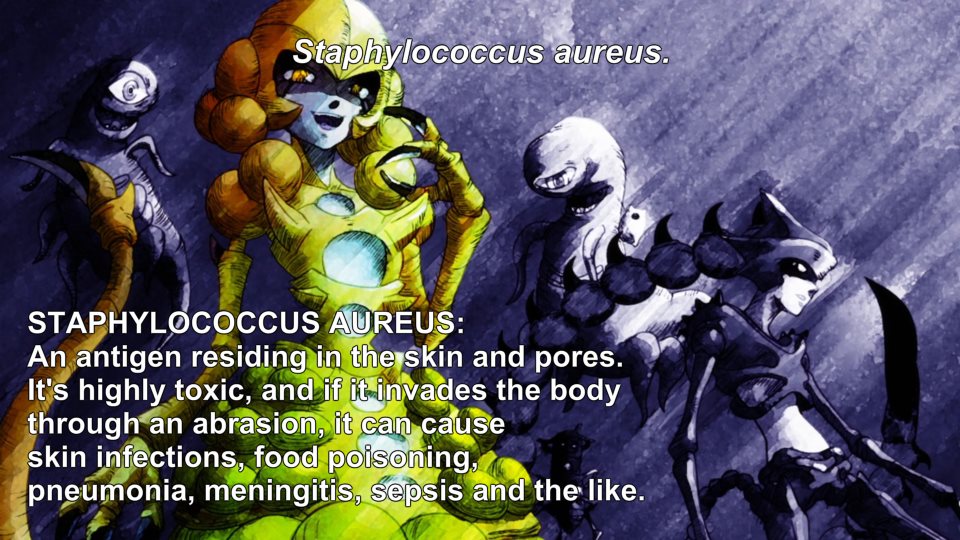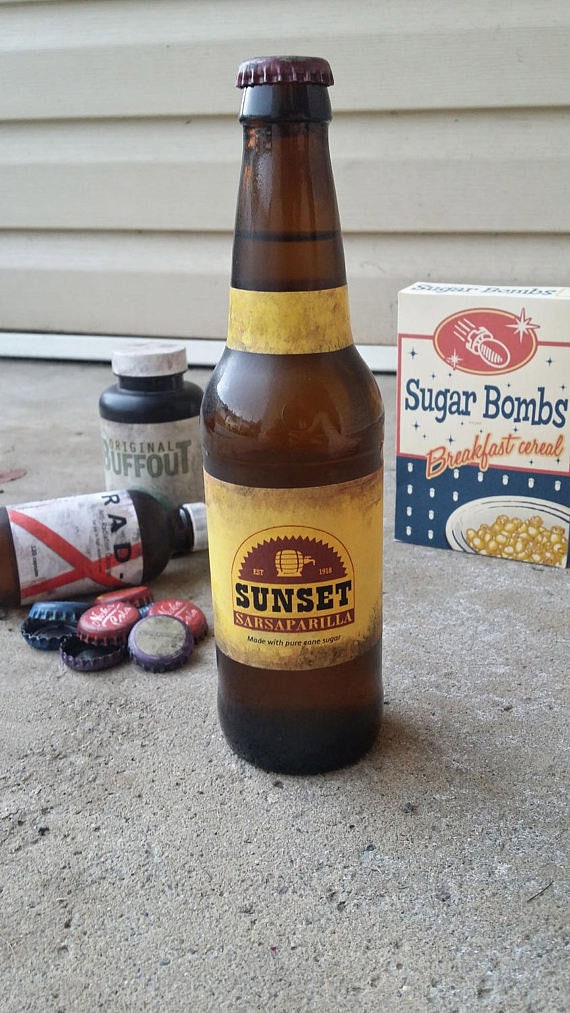Medieval Europe was Wasted 24/7!
Misconceptions. Today I want to talk about a popular, persistent misconception of Medieval Europe. That people only drank beer in Medieval Europe because the water was bad. This is one of those historical, medieval misconceptions that won’t die. Up there with most people being illiterate and never bathing. Part of the problem is influential people keep repeating it. And that’s what caught my attention. Jeremy Crawford, Rules Czar for D&D 5e, echoed this information in an Sage Advice interview about alcoholic drinks and D&D.
I don’t expect fantasy RPG designers to be dedicated historians. However, they need to know at least the CORRECT basic information of the time period their product simulates. Especially if the person is the lead rules designer and thus responsible for how setting mechanics work and defining what is and is not possible within the game world.
So for anyone under the assumption Medieval Europe was wasted 24/7, which apparently includes Jeremy Crawford and Greg Tito, let’s put the idea to rest.
Medieval Millennia: 1,000 Years of Beer Without Water
The Medieval Era runs from the fall of the Roman Empire to the Italian Renaissance, roughly one thousand years. Think about that for a second. For a millennia EVERYONE, cradle to grave, only drank beer or wine. Even without evidence, pausing a beat to think about the implications of the statement reveals how ridiculous it is. All the generations of nine-year-olds with liver cirrhosis.
You Need Water to Live
You can’t live long without water. In fact, it’s part of the Survival Rule of 3. Dehydration is most likely to kill you in a survival situation after exposure. Alcohol meanwhile is a diuretic. Like coffee, tea, and soda it signals your body to flush water out of your system (urinate) and tends to make you thirsty (you know… FOR WATER). Additionally, alcohol suppresses the ANTI-DIURETIC hormone that signals your body to keep water cycling through your system. Alcohol creates dehydration with this two-prong attack.

That’s why it’s important to hydrate when getting boozy. Dehydration is one of the primary ingredients of a nasty hangover. Now, in a survival situation you should drink the beer if no water’s available. In that situation, a little water coming into your system is better than nothing.
But, as everyday operating procedure, you should be drinking water. Drinking only alcohol is going to kill you.
People Are Lazy
Work smarter, not harder should be the slogan for mankind. People are lazy and in general we want to do the least amount of work for the most amount of gain. That’s why we’re the animals with the big brains. We survive and thrive by being clever when it comes to challenges.

This is why drinking only alcohol makes no sense. Most alcohol production, including brewing, requires boiling as part of the process. People also knew boiling made water potable (cooking). If you can make the water safe by boiling and safe water is the issue, why would people waste time and resources making beer?
What we do know in modern times, as in the past, when a location’s water resource is no longer reliable people leave. Whether a river changes course, a well dries up, or a source becomes undrinkable people abandon the location. It’s one of the historical reasons for ghost towns.
Water & Resource Management
We know you can only live three days without water. How long do you think it takes to make beer? I can tell you it takes longer than three days to found a homestead, set up brewing equipment, and grow a barley crop. How then did people found settlements if they couldn’t drink the water? How preventatively expensive would it be for a family or settlement if they had to import all the beer they needed to drink in the first year?

Famines happened in the Medieval era. Under this assumption a bad harvest means more than some people starve, it means everyone might die of thirst.
Additionally, you need those fields and their crops for like… FOOD. People would starve if they had to use all their harvest for making beer. What about animals, what do they drink? Waterborne pathogens in foul water kill animals too. Now you have to brew beer for people and livestock?
You also need a lot of metal and fuel to make beer. Metal isn’t cheap and you need a lot for the scale of beer production needed to sustain even a modest settlement. Fuel, the amount of firewood, peat, or coal needed to keep a large brewing setup running all year long would eat up the local supply needed for heating, cooking, and crafting.
Bad Water Affects More Than Hydration
Water is for more than drinking. It impacts bathing, washing, cleaning, and cooking. Bad water can enter your body if you’re bathing in foul water. Scrapes, cuts, and sores are prime for infection. The same for washing clothes and cleaning. Soap makes a big difference, but it can only do so much if you’re soaking all surfaces in foul water.

Boiling water can make it potable, but not all cooking requires boiling water. And if I have to boil all water before cooking I might as well boil all my drinking water. Thus, again, not needing to only drink alcohol.
High Volume Alcohol Consumption Problems
Spending a lot of time three sheets to the wind is not conducive to a long, productive, and happy life. In medieval times, most people did some form of manual exertion during the day. Whether it was manual labor, training, or leisure and sports. There were few desk jobs and most leisure and entertainment meant doing activities outside. All the sort of thing that makes a person quite thirsty.

If you have a hard, manual job you’re not going to have a good day if you have to keep sucking down beers sunrise to sunset to quench your thirst. And those are the effects of alcohol that aren’t motor and mental impairment. You could realistically get too drunk to do your job. Mix excessive alcohol consumption with a bit of heat exhaustion and lethality skyrockets.
And as mentioned previously, the health issues of chronic, excessive alcohol consumption. Liver cirrhosis, kidney failure, pancreatitis, etc.
Some of the smartypants in the audiences might think I’ve forgotten small beers. I haven’t, we’ll talk about small beers and the like in a bit.
It’s the Renaissance and Water’s OK to Drink Now!
People hung up on this assumption baffle me. I’m not sure what magical thing they envision happened in 15th century Italy that made water OK to drink again. Germ Theory wasn’t accepted fact in Europe for another 400 years.

Additionally, water filtration isn’t new. We wrongly assume people in history were stupid, or at least ignorant. But effective water filtration practices existed as documented fact prior, hundreds of years BC. Including particulate filtration, activated charcoal (ash), UV filtration, and boiling. Most of the same water filtration methods we use today. They may not have the right theory about why people were sick, but humans are pretty good at figuring things out through trial and error. Consider how many plants humans must have tried to smoke before settling on the mainstays of tobacco, marijuana, and opium.
Sure at the fall of the Roman Empire a lot of knowledge was lost in Western Europe. Most lost was high education knowledge like architecture, engineering, civil infrastructure. But, people didn’t forget the essential skills and tricks to survival. And it doesn’t get any more essential than having water to drink.
People Drank Water
To my knowledge there’s never been another place or time where people assumed to nobody drank water because it was dangerous. People drink from the Ganges today and it’s not safe at all. While travelers are urged not to drink the water in Mexico, locals do. The locals don’t survive on apple soda and bottled mineral water.

How the Water Misconception Started
All right, so we know the idea is silly. But, from where did the misconception spring? I don’t think anyone for sure knows. Alcohol was and still is a big business across the world. It probably helps that many of the preserved records we have from the medieval period come from religious institutions. Literacy was high in cloisters and many made money as brewers, vintners, and distillers during the time. It could be a skewed sample of the archaeological records we have from the period.
It may also have to do with sea travel. Barreled water was well known for turning foul during ship voyages. So many people at sea were forced to drink beer out of safety. As the Rime goes “water, water, every where, nor any drop to drink.” Not a lot of sources for fresh, clean water at sea. And desalinating water (an already resource expensive task) is difficult when you don’t have ready access to fire fuel. Plus, fire and wood ships don’t mix. The beer in question was often small beer (not yet). Because drunkenness and ship rigging is a recipe for serious injury.
The Most Reasonable Explanation
Occam’s Razor fits this situation like a glove. Think about why you and I don’t drink only water. I can think of two reasons. First, we like the specific effect of the drink. Like nicotine or caffeine, we consume alcohol because we like the effect it has on us.
The second reason, water isn’t a very exciting drink. Check out the drinks in your home. You might have flavored seltzer, milk, juice, tea, coffee, soft drinks, beer/cider/wine, liquor. You don’t need any of those to survive, but you probably drink more of them combined than plain water. People like variety, the same reason we don’t eat the same food at every meal.
Now think, what did medieval people have available as drinks? Soda water wasn’t invented until the 18th century. Not milk, more economical and sustainable to preserve as a dairy product. Also, raw milk isn’t very safe to consume. Pasteurization was a big technical advance. And it’s the reason you can’t buy raw milk in the U.S. without swearing the milk is for making dairy products and not drinking.
Juice
Medieval Europe did not have the geographic blessing of the United States. We have the bounty of the Rio Grande Valley, Florida, and California that can produce varied fruit all year long. Also, juice has a short shelf life. Especially without refrigeration. You know what pathogens love? Water and sugar, which is… juice. For the time and place they had limited, seasonal fruit. So seasonal fruit that couldn’t be consumed fresh was turned into other products. Again, products with a longer shelf life. We’re talking cider, preserves, vinegar, candied and dried fruit.
Starting to see a trend? Food is valuable enough that people don’t waste it. But, to not waste it they need a way to preserve that food for later. This is common before industrialized food production. The average person couldn’t simply go shopping at a grocery store for cheap, disposable food then come home and stick items in a refrigerator to extend shelf life.
Tea & Coffee
The tea and coffee trade didn’t impact Europe until the 17th century. Coffee from the New World and tea from China. Speaking of tea, by 1792 Britain was importing over 10 million pounds of it per year. In the Netherlands, coffee houses became synonymous with business. They were the place to conduct business agreements. Europeans fell fast and hard in love with coffee and tea, but why? Perhaps because they tired of drinking water. And, coffee and tea offered caffeine, which they couldn’t get from small beer.
Soft Drinks

Yes! Like juice, basic, uncarbonated soft drinks were available starting in the late medieval/early renaissance period. The most common being lemonade. But, it still required fresh fruit so could only be produced in certain times of year while most fruit was preserved in the aforementioned ways. Soft drinks get their name because they’re not “hard” (alcohol) drinks. An important distinction for root beer, ginger ale, and sarsaparilla which can be brewed with a variable ABV (alcohol by volume) percentage.
Alcohol
So we have ciders, beers, wines, and even hard liquors. For the people of the medieval period you could drink water or something with flavor. Then we have to touch on small beer (told you we’d get here). Small beers are like soft drinks, but made from regular old beer. They’re brewed to have a negligible ABV. These are one of the primary drinks of the time. Small beer dropped in popularity once other, more refreshing (caffeinated), drinks became available (coffee and tea).

But, to those unfamiliar with small/table beer many accounts up through the 18th century refer to people young and old drinking beer as a primary refreshment all day. If you didn’t know about small beer (often <1% ABV) it would sound like the medieval age was one long fraternity rager.
Watered Wine
Ancient Greek writings often refer to drinking “watered wine.” This was fortified (high ABV) wine. They used it to flavor and and make water more refreshing. In Homer’s Odyssey the ratio is one part wine to 20 parts water. That’s a shot of wine in a quart of water. You’re more likely to get water poisoning than intoxicated drinking the mixture.
Gin & Tonic
Mixing alcohol into drinks to make it more palatable isn’t a new concept by any means. The iconic cocktail gin and tonic comes from this practice. Tonic water was the method for distributing quinine (malaria prevention medication). British officials in India found the taste so bad they began to mix it with gin to make it more palatable. It’s very strange now to consider tonic water is something added to alcohol to improve the taste.
Water & Beer Wrap Up
When it comes to this weird, persistent myth it’s a question of availability and spoilage. For most medieval people the safe drinks they had available would be water, herbal teas, beer/cider, and seasonal fresh juice or uncarbonated soft drinks. People also didn’t have the sure availability of food we do today. Without modern advances like refrigeration, freezing, canning, and pasteurization, fresh food had to be preserved in other ways. It was use it or lose it and lose it means potential starvation. You couldn’t risk throwing out spoiled milk and fruit juice when it could be preserved for a hungry day in the lean months.
Creating a fictional world, especially a fantasy world, is about creating not verisimilitude, but believability. We have to support the suspension of disbelief. And unfortunately in RPGs we have to do a little more work than “Fridge Logic.” The idea that standing in front of an open refrigerator after watching a movie and then realizing something in the movie doesn’t make sense. But, it was believable enough it didn’t interrupt your suspension of disbelief while consuming the material.
Problem with RPGs is the adventures take hours, days, weeks, and even months or years to complete. Which gives you plenty of time to screw up disbelief while playing the game. The most common example being if healing magic exists why do people die from sickness or injury?
It disappoints me when I hear a pillar of the hobby like Crawford dropping widely-discredited misinformation on an uninformed public. I know research and the quest for verisimilitude is not everyone’s drive. But critical thought, reviewing facts you take for granted, can go a long way to improving your game and the hobby as a whole.
Support the Blog
Thanks for reading. If you liked this add the blog to your bookmarks. You can also follow me on Twitter @RedRaggedFiend and hit me up with any topics you’d like to see. You can also support the blog by buying me a health potion for just a buck.
Want to read something else? I’m building a custom D&D setting using the top-down method. Check out the Worldbuilding Process series starting with Worldbuilding Start to Finish.
Or you can check out my titles on DriveThruRPG. The most recent title is Healers Cross: an idyllic village that produces herbal medicines. The perfect setting for your campaign’s next side quest or low-level base of operations.
